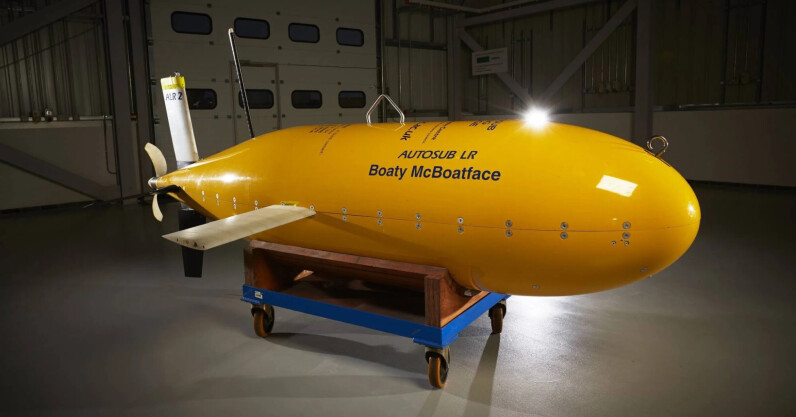
UK startup Aquark Technologies has used Boaty McBoatface — the internet’s best-loved submarine — to test its quantum sensing technology underwater for the first time.
The NATO-backed company put its so-called “cold atom” system inside the autonomous submarine. Boaty McBoatface then descended to the bottom of a giant indoor tank at the National Oceanography Centre (NOC) in Southampton.
The idea was to test how Aquark’s quantum tech — which must be completely isolated from external disturbances to function — would fare in the temperatures and pressures of an underwater environment.
Andrei Dragomir, the startup’s co-founder and CEO, called the trial a “resounding success” as the device performed just as it would on dry land. Dragomir said he expects practical applications of the technology to follow shortly.
40% off TNW Conference! For 1 week only…
Register by 28 April & save up to €700 on General Admission, Corporate, VIP & Investor Passes, and Startup/Scaleup packages
Aquark’s patented cold atom technology can be used as an alternative position, navigation, and timing (PNT) device, independent from satellites and thus immune to external tampering such as GPS interference.
That’s especially useful for vehicles like planes, drones, and submarines — hence NATO’s interest. The tech can also be used to measure minute variations in gravity caused by different densities in the seabed.
Dr Alex Phillips, head of marine autonomous and robotics systems at NOC, believes the technology has the potential to make a “substantial contribution to underwater navigation and seabed imaging.”
How does Aquark’s “cold atom” quantum sensing work?
Aquark cools atoms — typically from rubidium, a soft, silvery-white metal — to near absolute zero using lasers to create what’s known as a cold atom “trap”. At these ultra-low temperatures, the atoms slow down and take on quantum properties.
These quantum atoms are extremely sensitive to external forces such as gravity, acceleration, or rotation. By analysing those forces, scientists can measure acceleration, magnetic fields, rotation, gravity, and time with far greater precision than classical devices such as accelerometers, atomic clocks, or gravimeters.
Cold atom traps form the foundation of quantum sensors — a bit like how a chip forms the basis of a quantum computer. These sensors could transform everything from air traffic control to underground exploration.
Scientists have been trapping atoms for decades, using magnetic fields. But during his PhD, Dragomir found a way to trap atoms without magnetic fields at all.
This translates to systems that are smaller, lighter, cheaper, and more energy-efficient than existing ones, the company previously told TNW. They are also more robust and can be used in difficult terrain.
Aquark has previously tested its tech onboard a Royal Navy vessel and inside a small drone. It’s now been further validated on the NOC’s Autosub Long Range, affectionately known as Boaty McBoatface after the moniker won a public poll to name the vessel.
Dragomir has high hopes for Aquark’s next adventures. “In the future, we may be able to measure the density of minerals under the sea floor using gravity measurements or perform high-sensitivity magnetic field measurements, giving scientists new ways of seeing things that were previously hidden,” he said. “We may even uncover some hidden treasures!”



